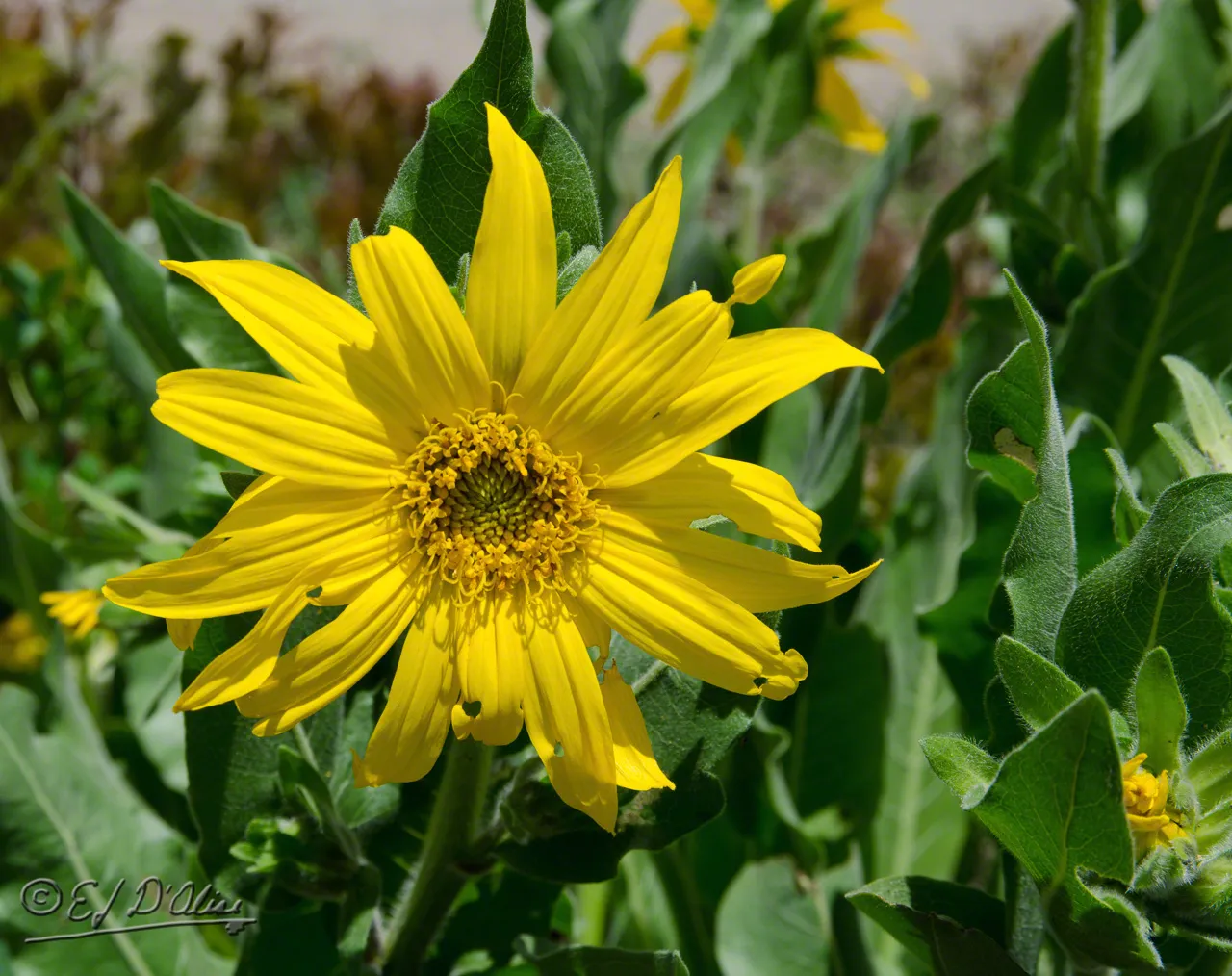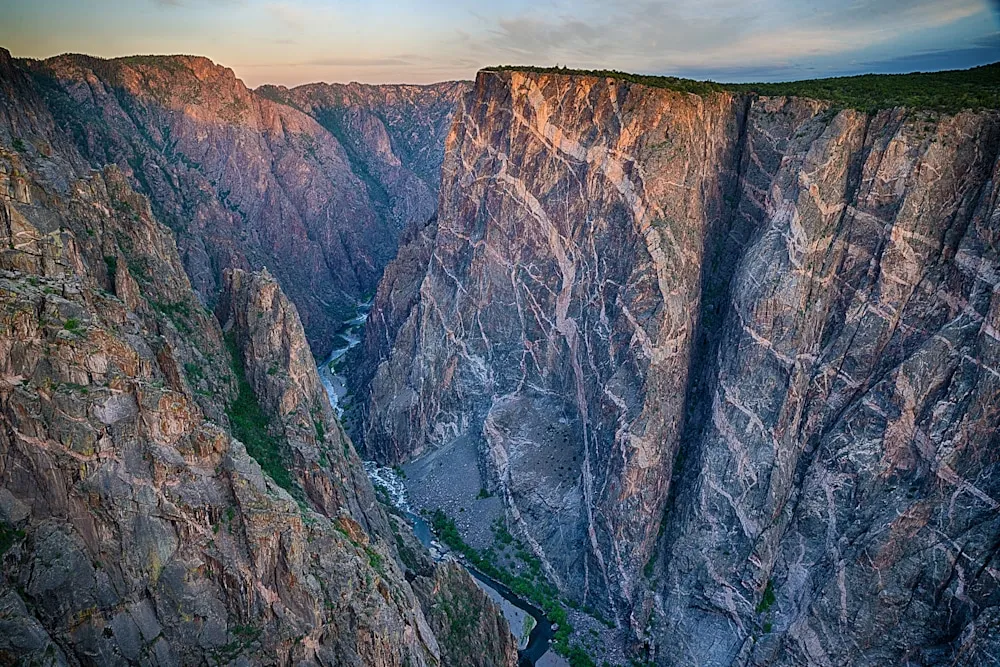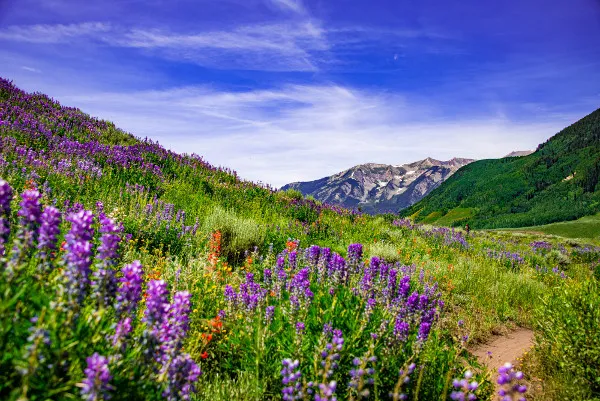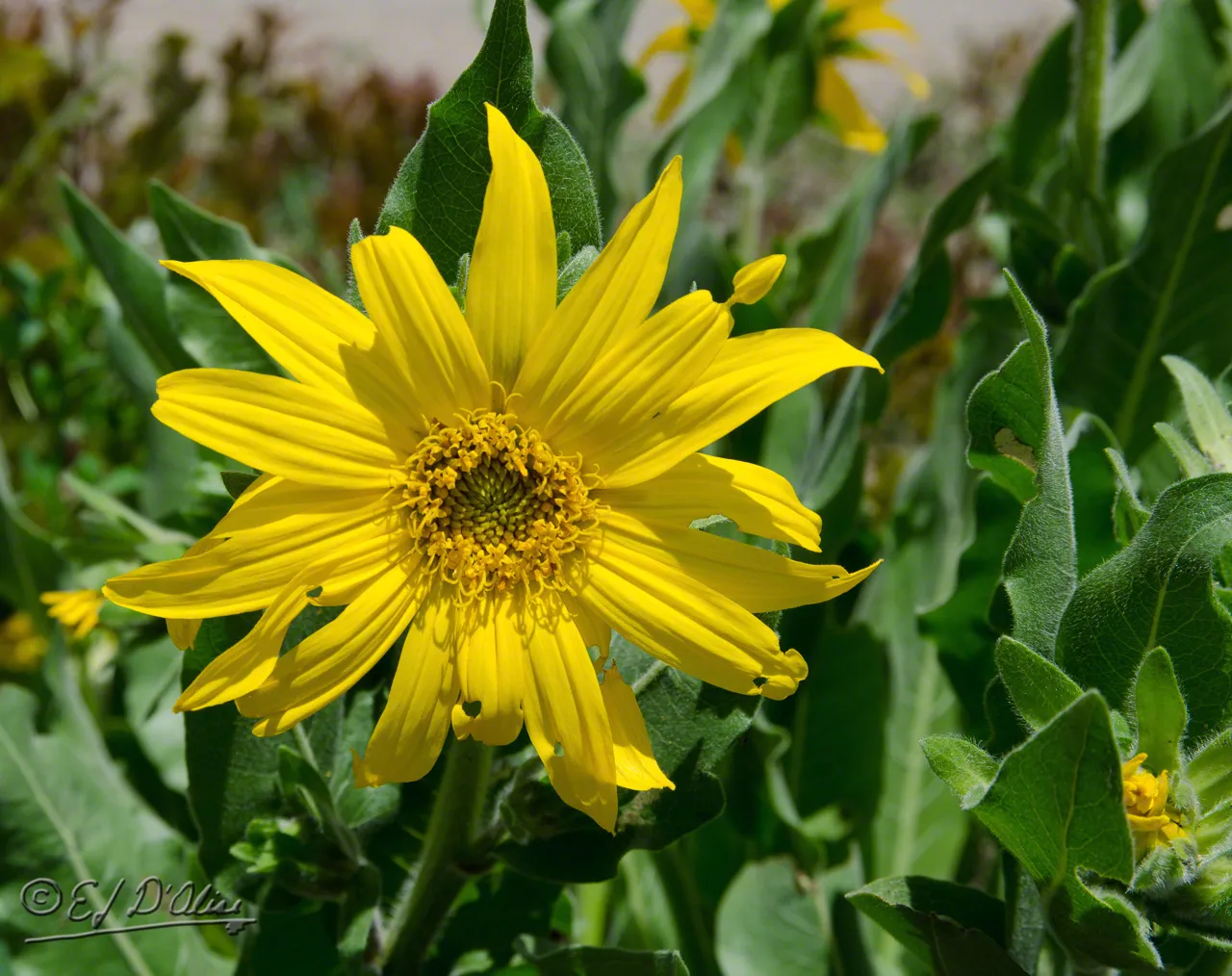
Best Time to Visit Black Canyon of the Gunnison: Complete Seasonal Guide 2025
Discover the perfect timing for your Black Canyon of the Gunnison adventure with this comprehensive seasonal guide. From wildflower blooms to snow-covered rims, I'll share insider insights from my multiple visits to help you plan the ultimate Colorado national park experience.
Why Timing Matters at Black Canyon of the Gunnison
After visiting Black Canyon of the Gunnison National Park across multiple seasons during my Colorado road trips, I can confidently say that timing your visit correctly makes the difference between a good experience and an absolutely unforgettable one. The best time to visit Black Canyon of the Gunnison depends entirely on what you're seeking from this dramatic landscape.

This remarkable national park, carved by the Gunnison River over millions of years, presents unique challenges and opportunities throughout the year. The park's elevation of over 8,000 feet creates a mountain climate with significant seasonal variations that directly impact accessibility, activities, and overall experience quality.
During my winter visit in March, I experienced firsthand how road closures and icy conditions can limit access to many of the park's most spectacular viewpoints. Conversely, my summer visits revealed why this season attracts the majority of the park's annual 300,000+ visitors. Understanding these seasonal patterns is crucial for planning when to visit Black Canyon of the Gunnison for your specific interests.
The park's two main areas - the easily accessible South Rim and the remote North Rim - also have different seasonal accessibility patterns. While the South Rim remains partially open year-round, the North Rim closes completely from mid-November through mid-April. This fundamental difference in accessibility makes timing even more critical for visitors hoping to experience both sides of this incredible canyon.
💡 Pro Tip from Personal Experience
Based on my multiple visits, I recommend checking current road conditions on the National Park Service website before finalizing travel dates. Weather can change rapidly at this elevation, and unexpected early snowfall or late spring storms can significantly impact your planned activities.
Spring: Wildflower Paradise (March - May)
Spring represents one of the most rewarding times to visit Black Canyon of the Gunnison, though it requires some patience and flexibility. The best time to visit Black Canyon of the Gunnison for wildflower enthusiasts is undoubtedly late April through mid-May, when the high country awakens from its winter slumber in spectacular fashion.

During my April visit, I was amazed by the diversity of wildflowers along the rim trails. Leopard lilies, bur buttercups, and fern-leaf desert parsley create a colorful carpet that contrasts beautifully with the dark canyon walls. The South Rim's Uplands Trail becomes particularly spectacular during peak bloom, typically occurring in the first two weeks of May.
Spring Weather Patterns and What to Expect
Spring weather at Black Canyon can be notoriously unpredictable. March often still feels like winter, with temperatures ranging from highs of 55°F to lows of 30°F. Snow is common through mid-April, and I've personally experienced sudden weather changes that can drop temperatures 30 degrees in a matter of hours.
By May, conditions become much more stable and pleasant. Daytime temperatures typically reach the comfortable 70s, while nights remain cool in the mid-40s. This temperature range is ideal for hiking and photography, as the cool air provides excellent visibility across the canyon.
One of spring's greatest advantages is the dramatic waterfalls created by snowmelt cascading down the canyon walls. These temporary features are most prominent in late April and early May, adding an extra dimension to the park's already impressive scenery. During my May visit, I counted over a dozen waterfalls visible from various overlooks - a sight that's simply not available during other seasons.
Spring Activities and Accessibility
Spring offers moderate crowds, making it an excellent time for photography and peaceful contemplation. The South Rim Road typically opens fully by mid-April, though the exact date varies based on snow conditions. The North Rim usually becomes accessible in late April or early May, weather permitting.
For hikers, spring presents unique opportunities and challenges. While rim trails become increasingly accessible as snow melts, inner canyon routes remain treacherous due to muddy conditions and potential rockfall from freeze-thaw cycles. I strongly recommend sticking to established rim trails during spring visits unless you're an experienced mountaineer with proper equipment.
🌸 Book Your Spring Colorado Adventure
Summer: Peak Season Glory (June - August)
Summer undoubtedly offers the most comprehensive Black Canyon experience, which is why it's consistently rated as the best time to visit Black Canyon of the Gunnison by most visitors and park rangers. During my July visit, I experienced the park at its most accessible and activity-rich, with all roads open, all facilities operating, and the fullest range of ranger programs available.
The summer season brings average high temperatures in the comfortable 80s°F, though the high elevation and low humidity prevent the oppressive heat common in lower-elevation destinations. Nighttime temperatures drop into the pleasant 50s°F, perfect for camping and stargazing. This temperature range makes summer ideal for extended hiking, photography workshops, and multi-day camping adventures.
Summer's Unique Advantages
Summer provides unparalleled access to both the South and North Rims. During my August visit, I was able to drive the complete North Rim Road - something impossible during much of the year due to seasonal closures. The contrast between the two rims is stark and fascinating: the South Rim offers easier access and more developed facilities, while the North Rim provides solitude and some of the most dramatic viewpoints in the entire park.
The extended daylight hours of summer (sunrise around 5:30 AM, sunset after 8 PM) allow for ambitious day hikes and photography sessions. I particularly enjoyed capturing the changing light on the Painted Wall - Colorado's tallest cliff at 2,250 feet - throughout the day. The interplay of light and shadow in the canyon reaches its peak drama during the long summer days.
Water activities become feasible during summer months. The East Portal Road, which descends dramatically to the Gunnison River, provides access to fishing, kayaking, and riverside camping opportunities that are simply unavailable during colder months. I spent a memorable afternoon fishing for brown trout in the surprisingly cool river waters, a perfect respite from the warm summer air above.
Managing Summer Crowds and Heat
The primary drawback of summer visits is increased crowding, particularly at popular overlooks like Painted Wall and Chasm View. To maximize your experience, I recommend arriving at major viewpoints before 9 AM or after 4 PM. The midday crowds can significantly impact photography opportunities and the sense of wilderness solitude that makes Black Canyon special.
Despite the generally moderate temperatures, the intense high-altitude sun can be deceptive. During my summer visits, I experienced mild altitude effects and stronger-than-expected UV exposure. Always carry more water than you think you'll need, wear comprehensive sun protection, and be prepared for sudden afternoon thunderstorms that are common during July and August.
☀️ Reserve Your Summer Camping Spot
Fall: The Hidden Gem Season (September - November)
In my opinion, fall represents the absolute best time to visit Black Canyon of the Gunnison for travelers seeking the perfect balance of weather, accessibility, and crowd levels. My September visit revealed why this season has become my personal favorite for experiencing this remarkable national park.

Fall at Black Canyon offers a unique combination of summer's accessibility with significantly reduced crowds. September typically sees visitor numbers drop by 40% compared to peak summer months, yet weather conditions remain excellent for all outdoor activities. The temperature sweet spot - daytime highs in the 70s°F and crisp nights in the 40s°F - creates ideal conditions for hiking, photography, and extended outdoor exploration.
Fall's Spectacular Color Display
The autumn transformation at Black Canyon is truly breathtaking. Gambel oak trees turn brilliant reds and oranges, while aspen groves shimmer gold against the dark canyon walls. Single-leaf ash adds purple accents to this natural masterpiece. The color change typically begins in late September and peaks during the first two weeks of October, creating photography opportunities that rival any location in Colorado.
During my October visit, I spent hours at the Oak Flat Trail, where the seasonal colors create a stunning foreground for canyon photography. The contrast between the warm autumn hues and the dramatic black walls produces images that capture the park's dual personality - both gentle and fierce, accessible yet wild.
Wildlife activity increases dramatically during fall as animals prepare for winter. I've observed elk, mule deer, black bears, and numerous bird species during autumn visits. The cooler temperatures and reduced human activity seem to bring wildlife closer to the rim areas, offering exceptional viewing opportunities for patient observers.
Fall Activities and Seasonal Considerations
Fall provides excellent conditions for inner canyon hiking, as cooler temperatures make the strenuous descent and ascent more manageable. During my September inner canyon adventure via the Gunnison Route, I found the moderate temperatures and stable weather patterns ideal for this challenging hike. The reduced summer heat stress allows for longer exploration periods at the river level.
Rock climbing enthusiasts particularly favor fall conditions. The stable weather patterns, comfortable temperatures, and excellent rock conditions make autumn the preferred season for tackling Black Canyon's world-class climbing routes. I've watched climbers on the canyon walls from various overlooks, and fall clearly provides the most consistent conditions for these challenging ascents.
However, fall visitors must remain flexible as weather can change rapidly. By November, early winter storms can bring sudden snow and ice, potentially closing North Rim access for the season. I always recommend having backup indoor activities planned for November visits, as conditions can shift from perfect to challenging within hours.
🍂 Fall Photography Pro Tip
The best fall colors typically occur 2-3 weeks earlier on the North Rim due to higher elevation. Plan to visit the North Rim first if you're hoping to catch peak autumn colors during a single trip.
Winter Adventures and Limitations (December - February)
Winter at Black Canyon of the Gunnison presents a completely different experience - one that's simultaneously the most challenging and potentially the most rewarding. While winter is generally not considered the best time to visit Black Canyon of the Gunnison for first-time visitors, it offers unique opportunities for adventurous travelers seeking solitude and winter sports.
During my March winter visit, I experienced the park's harsh beauty firsthand. Snow-covered canyon rims create a dramatic monochromatic landscape, while icicles hanging from the cliff faces add sculptural elements not visible during other seasons. The silence is profound - broken only by the distant sound of the river flowing far below and the occasional call of a raven.
Winter Access and Activities
Winter access is significantly limited. The North Rim closes completely from mid-November through mid-April, with no vehicle access to ranger stations or overlooks. The South Rim Road remains open to Gunnison Point near the visitor center, but the remaining 6 miles of scenic drive close to vehicles, becoming a route for cross-country skiing and snowshoeing.
The National Park Service offers guided snowshoe tours on weekends throughout winter, providing free equipment and expert interpretation. During my participation in one of these programs, I learned about winter ecology and animal adaptations while experiencing the canyon's winter solitude. These ranger-led activities are excellent for families and represent one of the best values in the entire national park system.
Independent winter recreation requires serious preparation. I've snowshoed the closed South Rim Road multiple times, and the 12-mile round-trip journey to High Point provides an extraordinary workout with spectacular views. However, the combination of high altitude, potential extreme cold, and rapidly changing weather conditions demands extensive winter outdoor experience and proper equipment.
Winter Weather Realities
Winter temperatures at Black Canyon can be extreme. January and February commonly see lows below 0°F, with daytime highs struggling to reach the upper 30s°F. Wind chill can make conditions feel significantly colder, and sudden weather changes can trap unprepared visitors in dangerous situations.
Snowfall varies dramatically from year to year, but visitors should expect significant snow cover from December through March. During my winter visits, I've encountered everything from bare ground to snow depths exceeding 3 feet. The unpredictability requires flexible planning and multiple backup options.
Despite the challenges, winter offers unique rewards. The park receives fewer than 2,000 visitors per month during winter, creating an almost private experience for hardy adventurers. The International Dark Sky designation becomes most apparent during winter's long nights, offering stargazing opportunities that rival anywhere in North America.
Month-by-Month Weather Guide and Recommendations
Understanding the monthly variations helps determine the best time to visit Black Canyon of the Gunnison for your specific interests and tolerance for weather challenges. Based on my visits throughout different months and consultation with park rangers, here's a detailed breakdown of what to expect each month.
From my extensive experience visiting throughout the year, I can definitively say that May, September, and October represent the best time to visit Black Canyon of the Gunnison for most travelers. These months offer the optimal combination of weather, accessibility, manageable crowds, and diverse activity options.
May provides the excitement of wildflower blooms and snowmelt waterfalls, September delivers perfect weather with summer's accessibility but fall's reduced crowds, and October showcases nature's autumn artistry in full display. Each of these months offers something special while avoiding the extremes of winter's limitations or summer's peak crowding.
📅 Booking Recommendations
Peak Season (June-August): Reserve camping and lodging 6 months in advance
Shoulder Season (April-May, Sept-Oct): Book 3-4 months ahead
Off-Season (Nov-March): Generally available with shorter notice, but check road conditions
Conclusion
After multiple visits across all seasons and countless conversations with fellow travelers and park rangers, I can confidently conclude that the best time to visit Black Canyon of the Gunnison ultimately depends on your priorities, experience level, and tolerance for crowds and weather challenges.
For first-time visitors seeking the most comprehensive experience with reliable weather and full accessibility, I recommend planning your visit for mid-May through September. This window provides access to both rims, all facilities, and the complete range of activities that make Black Canyon special.
For photography enthusiasts and those seeking more solitude, September and October represent the sweet spot of excellent conditions with manageable crowds. The autumn colors and perfect hiking weather create ideal conditions for deeper exploration and memorable experiences.
Winter visitors should come prepared for a completely different experience - one that rewards adventurous spirits with unparalleled solitude and unique perspectives on this remarkable landscape. However, winter visits require serious preparation and flexibility.
Regardless of when you choose to visit, Black Canyon of the Gunnison offers experiences that will fundamentally change your perspective on Colorado's natural wonders. The dramatic cliffs, the play of light and shadow, the profound silence, and the sheer scale of geological time made visible in stone - these elements combine to create something truly extraordinary.
Remember to check current conditions before your visit, make necessary reservations well in advance for peak season travel, and always prioritize safety over schedule. The canyon has waited millions of years to reveal its secrets - it will still be there if weather forces you to adjust your plans.
I hope this guide helps you choose the perfect time for your Black Canyon adventure. Whether you're drawn by spring wildflowers, summer's full accessibility, autumn's spectacular colors, or winter's profound solitude, this remarkable park offers rewards for every season and every type of visitor.
Ready to Plan Your Black Canyon Adventure?
Start planning your perfect visit to one of Colorado's most dramatic national parks.
🏔️ Find Colorado Accommodations 🎒 Shop Hiking Gear